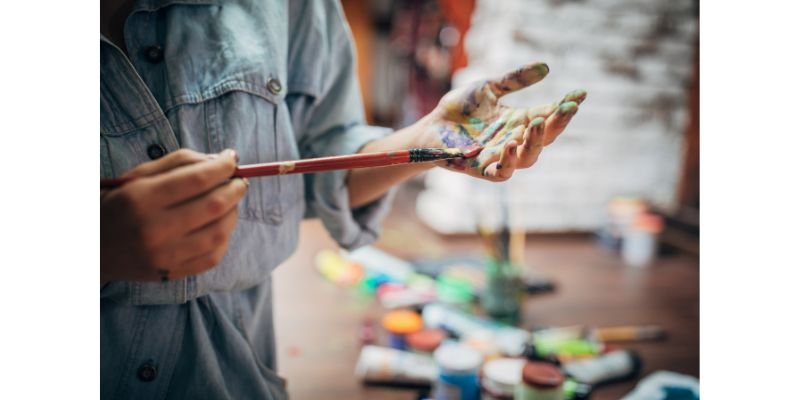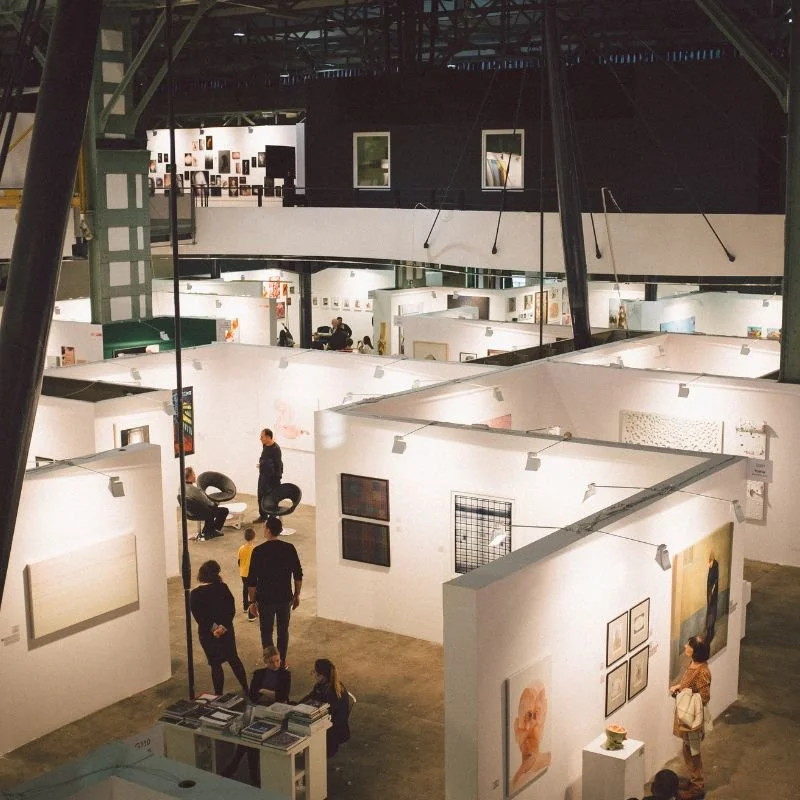What is an artist’s resume?
What is an artist CV vs a Resume?
When it comes to showcasing your professional accomplishments, both a CV (Curriculum Vitae) and a resume serve as vital tools, but they’re tailored for different contexts. A resume is a concise, targeted document, typically one to two pages long, that highlights your skills, experiences, and achievements most relevant to a specific opportunity. It’s flexible and adaptable to various industries, including art, where you focus on your most relevant projects or roles.
A CV, on the other hand, is a comprehensive record of your professional and academic achievements. Often used in academia or research, a CV can span multiple pages and includes everything from educational background to publications, awards, and professional experiences. For artists, a CV might include an exhaustive list of exhibitions, collections, awards, and press coverage, offering a full snapshot of their career trajectory.
An artist’s resume falls somewhere between these two. It’s a specialized version of a resume, designed to highlight your artistic achievements, including exhibitions, awards, residencies, media coverage and relevant experience. Unlike a traditional resume, it focuses less on employment history and more on your creative journey.
How to make an artist CV with no experience
Starting your artist CV from scratch can feel daunting, but everyone has to begin somewhere. Even if you have no formal exhibitions or awards, you can still craft a compelling document that represents your potential as an artist. Here’s how:
1. Start with Your Basics
Include your name, contact information, and any online portfolios or websites where your work can be viewed. This makes it easy for galleries, curators, or potential collaborators to learn more about you.
2. Highlight Your Education
If you’ve studied art formally, list your degrees and the institutions you attended. If you’re self-taught, there is no need to mention it though you can list any programs, workshops, part time study or apprenticeships you have taken. If your field of study was related to the broader visual arts such as design, theatre, architecture, interior design, product design etc, this can be included.
3. Focus on Creative Projects
Even if you haven’t exhibited in galleries, think about other creative work you’ve done. Have you participated in community art projects, created work for a local event, or collaborated with friends? List these projects, including a brief description of your role.
4. Include Related Experience
If you’ve worked in roles that support your artistic growth, such as teaching art, volunteering for arts organisations, festivals or participating in creative events which can include local or online, include these under a section like "Related Work."
For growing your exhibiting experience, you can consider hosting your own exhibition or applying to open calls .
How to write a good artist resume
Whether you’re a seasoned artist or just starting out, crafting a strong artist resume is essential for securing opportunities like exhibitions, residencies, or grants. Here’s a step-by-step guide to writing an effective artist resume:
1. Use a Clean Format
Simplicity is key. Choose an easy-to-read font like Arial or Times New Roman, and keep the design minimal. Focus on clarity and organization. This needs to be an easy to read document that will be scanned over by many. So make it easy on the eye and avoid dense paragraphs of text.
Under (4) below, I list various sub headings for your resume. Under each of these sections your project, exhibition, media feature would be written concisely as one or two lines of text.
2. Start with Contact Information
Your name, phone number, email, and portfolio or website link should be prominently displayed at the top.
3. Add a Short Summary (Optional)
A brief introduction can help tie your resume together, especially if you work across multiple disciplines or have a unique artistic approach.
4. Focus on Key Sections
Education: List degrees, certificates, or notable workshops.
Exhibitions: Include solo, group, or juried exhibitions. If you have none, leave this section blank for now. This section can include any fairs where you have shown your art. For artists who have had many shows this section can be split out into further section headings such as Solo Shows, Group Shows etc.
Residencies, grants and awards: List any institutions which have funded your practice or provided a grant, any awards you have won which can include being on a short list as well as being a prizewinner, and any residencies you have attended. When you have multiple items to list in this section you can break out each section, such as Residencies as one section. Then Awards as another section. While your list is short, they are fine to be grouped together under the heading ‘Residencies, Grants and Awards’
Press and Publications or Media: This section is for any press articles , interviews or media coverage which can include broadcast media, podcasts, radio, magazines, newspapers, blogs. It is helpful to have links on your website to these articles or features online, though it is not necessary to include the links in a resume that you send out to galleries or for applications.
Commissions and Projects: In this section you can list any commissions that are in the pubic domain such as a brand collaboration. You would not add a private portrait commission for example. This section can also include any licensing projects or ad hoc projects that do not fit under the above sections. Examples include a community mural, poster for a theatre project, fashion collaborations, designing a wine label, your art on book cover etc.
Collections: Only add this section when relevant. Once your art is being collected by known collectors or institutions, in this section you can list them. This can include museums, private collections, corporate collections, institutions such as the Government Art Collection, universities etc.
Related Work: This can include any volunteer work that is related to your creative practice and art career and is used when artists have little in the above sections. You can use this in the early part of your career and remove it later on as your exhibiting experience grows.
Artist Resume Layout
This is super simple. The top of the page is your contact info ( as explained above)
The section heading comes next. Whichever you wish to lead with, however Exhibitions is usually the priority.
Under this write the year, eg 2024. Under the year, all the exhibitions including exhibition title, Gallery, City, Country
Then 2023 and continue working backwards.
Example
Exhibitions and Fairs
2024
The Other Art Fair, London, UK
Night Sky, Host Gallery, Birmingham, UK
2023
Affordable Art Fair (Host Gallery), London, UK
Summer Exhibition, Royal Academy, London, UK
2022
Splash Drip Throw, Visionary Art Collective (Online exhibition curated by Gita Joshi)
Then insert the next section. Under it write the year.
And under the year, again working backwards, a one liner about the project.
Example:
Press and Media
2024
Art Seen Magazine, Summer 2024
Create Magazine, Issue 43
2023
World of Interiors, September 2023
The One Show, BBC, June 2023
A Day In The Studio, Window Magazine, February 2023
For each section as listed above, you would start with the most recent activities and list them by year.
When your work is taken to an art fair by a gallery include the gallery name and the fair, on the resume as the example above.
You can choose to mention the curators for juried shows - this is a personal preference for you
In the case of online exhibitions, it is helpful to include this information, again see the example above.
Where you appear on a radio or TV show, mention the name of the show, the broadcast network and it is helpful to mention the month.
Under press you can also include the headline of the article, and then the publication name and year. (see example above)
It is important to remember that this document will be scanned more than it will be studied. This means layout and simplicity are best.
Section Headings - make them bold and underlined.
Years - make the text bold.
Use italics where appropriate such as the gallery name when taken to an art fair, or the title of a news article like the examples given. And be consistent in your use of these layout features across the whole document.
You can download the free Essential Guide to Writing Your Artist Statement here
https://www.thecuratorssalon.com/essential-artist-statement
You can submit to Art Seen Magazine here https://thecuratorssalon.com/submissions



